It’s time to prepare for winter on the homestead! We’ve got a helpful list of chores to get you ready, plus a free checklist so you don’t forget anything!
If there is one thing that homestead has taught me, it’s how to enjoy each season fully.
And if it has taught me anything else, it’s how to be prepared! We are continually trying to be more and more prepared for the unexpected in life. Homesteading teaches you how to be incredibly resourceful, but having basic supplies is very important when nature throws you a curveball season!
Even if you live in an area with generally mild winters (like we do!), it’s still important to properly prepare your home, garden and animals for the changing seasons. Living on a homestead (big or small) requires a little extra preparedness!
So today, I’m sharing how we prepare our one-acre homestead for winter. I’ve also included a free checklist to get you started!
Head over to the Freebie Library to grab your free copy of the Winter Prep Checklists!
There are actually two Homestead Winter Prep Checklists for you! The first list already has some basic winter prep items on it. This is a great list to get you started! But, since every homestead is different, I also made a blank checklist that you can use to create a list that is customized to your homestead!
How We Prepare for Winter on our Homestead:
Now, let’s chat a bit more about getting ready for winter and some important items to do before the snow flies and ground freezes! After living in the high desert of Idaho my whole life, I’ve gotten pretty good at this winter thing! But there’s always a bunch to do to get everything ready! To make it a bit more organized, I’ve broken it down into three categories: home, animals, and yard & garden.
Here’s a quick overview of what we are going to cover in this blog post! Feel free to jump ahead to the section(s) that interest you the most!
And, don’t forget your Winter Prep Checklist from the Freebie Library!
Prepare for Winter: The Home
Heating the Home
Our number one priority in preparing our home for winter is ensuring our heat source. Each fall, we clean the wood stove and chimney to make sure it’s in good condition. Since our home is heated with a wood stove, we make sure we have a sufficient amount of firewood chopped and stacked. This is one of the ways that we save money on our homestead by salvaging old cut wood throughout the year, letting it season and then using it to heat our home in the winter. We stack our chopped wood along a wall in our hay barn.
We also have a wood bin in the house that doubles as a seating bench. The wood storage bench is one of the best things we’ve made for our home! We fill it with chopped wood every few days. It keeps all the dust and wood pieces contained so that we aren’t constantly having to sweep them up! Bonus: I made the bench from an old wood box that was being thrown out in the garbage! 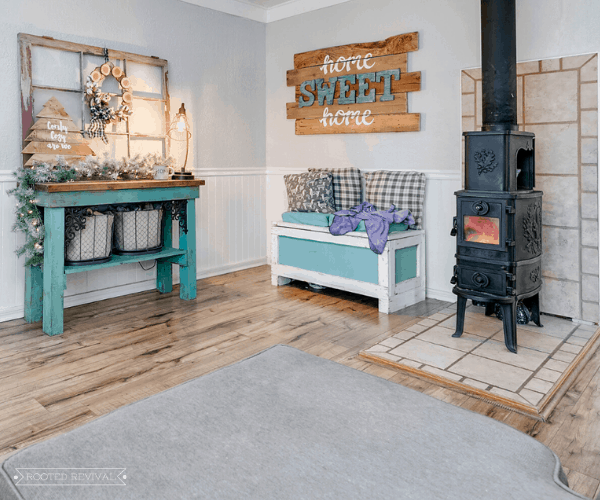
Preparing Food Supplies
Obviously, preparing food for winter is extremely important. We try to feed ourselves as much as possible with food that we can grow and preserve. Honestly, this is a year round effort to ensure we have healthy, homegrown food during each meal all winter-long! We aren’t necessarily peppers, but we do can, dry and freeze as much as food as we possibly can! I also try to stock up a bit on dried goods like lentils and rice to reduce trips to the store or in case of a major winter storm. 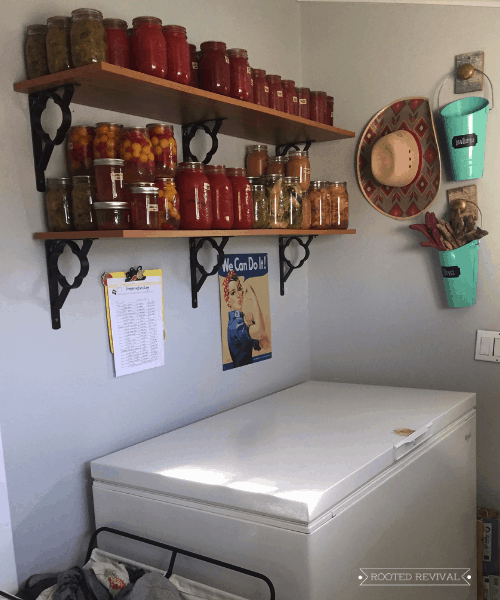
Insulating the Home
We try to seal and insulate our windows and doors as much as possible (it’s an old home and nothing is square!). We block drafty door jams with extra door-sealing insulation strips and double up with rolled up towels on blustery days.
We take advantage of passive solar heat when possible. We keep the Southern and Western blinds open during sunny days for extra heat and Vitamin D! There are sunshades outside our windows on the south-side to help keep our home cool during summer without air conditioning. In the winter, we roll the shades up to catch as much sunlight as possible to passively heat the house.
Organizing and Cleaning the Home
Doing a deep clean before winter is vital! We also prepare our for the winter weather by making sure we have our winter coats, gloves, boots, headlamps and other necessary items ready. We organize these necessities by the back door for easy access. I also have wooden crates and coat hooks by the front door to hold winter clothing and shoes. 
Preparing for Power Outages
And, of course, we alway prepare for the possibility of power outages due to winter storms. While they don’t happen too often in our current location, we know the importance of being ready. We try to keep a few extra jugs of water filled up and make sure our battery-powered lanterns are easily accessible. We are lucky to be able to cook on the wood stove and use it to melt and boil snow for water if needed. 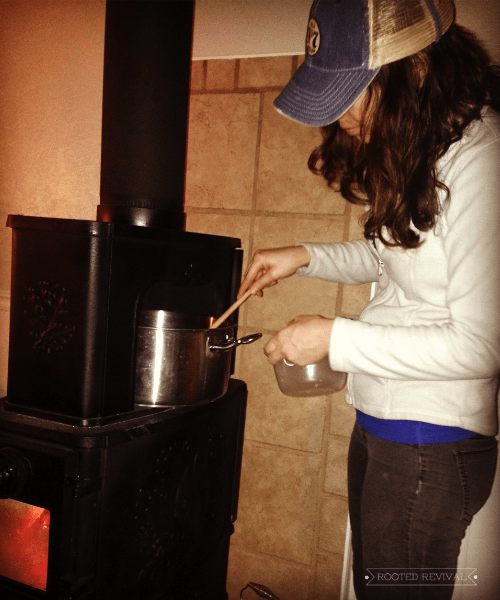
Prepare for Winter: Yard & Garden
Finishing the Summer Harvest
It’s a huge priority to harvest as much produce from our garden as we can before the frosts come. But, there are many things that you can harvest after the frost – like rosehips, medicinal roots and even some frost hardy greens! It’s also important to remember to save seeds from your crops before winter sets in! Leave a few of your best plants towards the end of the year and let the fruit/flowers/etc mature. Then, harvest the seeds, dry them and save them for future years! Harvesting seeds is one of the most sure-fire ways to ensure your garden self-sufficiency!
Planting Fall & Winter Crops
Many regions have mild enough winters to grow all year! If you are in one of these regions, you may want to consider planting a cool weather garden. Check out my full post for Everything You Need to Know about Fall Gardening to learn about how and what to grow during the colder months. If you are in a cold region like we are, you can still grow during the winter! We use cold frames to grow greens all winter long. I start them from seed in the early fall and we are able to enjoy fresh greens even in the dead of winter! 
Preparing Garden Beds
Check out my full post about 10 Fall Chores to Get Your Garden Ready for Winter! Putting the garden to bed is a big priority! We follow the no-till method, so we try to leave the garden and soil as undisturbed as possible. I simply cut the annual veggie plants at the soil line. This helps to ensure we aren’t disrupting the environment of the soil.
I compost everything except nightshades (tomatoes, peppers, eggplants, etc). This helps to reduce the risk of soil-born diseases and fungus. I’m also very careful to remove any fallen tomatoes to further reduce the risk.
The garden gets a healthy layer of compost, leaves and mulch. Our mulch is mostly comprised of leaves, animal droppings, spent shavings and wasted alfalfa. Goats are notorious hay wasters! Luckily, alfalfa is great for the garden, so nothing is wasted! 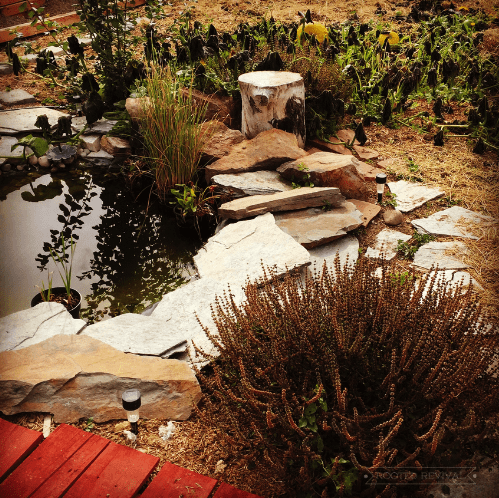
Preparing Yards, Trees & Bushes
If you have a lawn, it’s important to care for it heading into winter. Each region is different, but in our high desert region, we let our lawn get a little long in the fall so that it has a good stand going into winter to help insulate it. We also aren’t too particular about cleaning up leaves. We do remove leaves from our turf areas and relocate them to flower and garden beds.
We mulch around our bushes, perennial plants and fruit trees with a mix of compost and our “farm mulch” mix (comprised of spent shavings, animal droppings and hay). This gives them extra protection from our harsh winter weather and feeds the soil!
Then there is the basic yard clean-up, which involves having the sprinkler system shut off and storing away items like pots, BBQ’s, lawn chairs and other yard items. We also empty and clean our stock tank pool. We put the pump and filter inside the shed for winter. We fill our nature pond but leave it as is for winter without doing any special prep.
Prepare for Winter: Animals
Winter Hay and Feed Storage
We stock up on feed and hay to be sure we have ample amounts stored for winter. So far, we have avoided moisture and rodent issues by storing our feed in rubber garbage cans. As for hay, we ensure that we buy enough in the summer to last us until the next year’s cutting. Stacking hay is our least favorite chore of the year, but it always feels amazing to know that we have ample food on hand for our livestock! We also put out our heated waterers and make sure our extension cords are in good shape. 
Winter Chicken Care
We deep clean all the barns and coops, then put down a nice thick layer of bedding. We add to this layer throughout the winter, using the deep-litter method. The soiled bedding gets recycled to the garden where it will break down over the winter to fertilize and protect the soil. We do not heat or light our coops.
We do chicken health checks periodically throughout the winter. This helps us closely monitor for feather and leg mites which are more common as the weather cools. We are also extra vigilant in watching for and preventing damp conditions which can cause frostbite. Check out my full series on caring for chickens during winter, including: feeding, housing, health and entertainment tips! 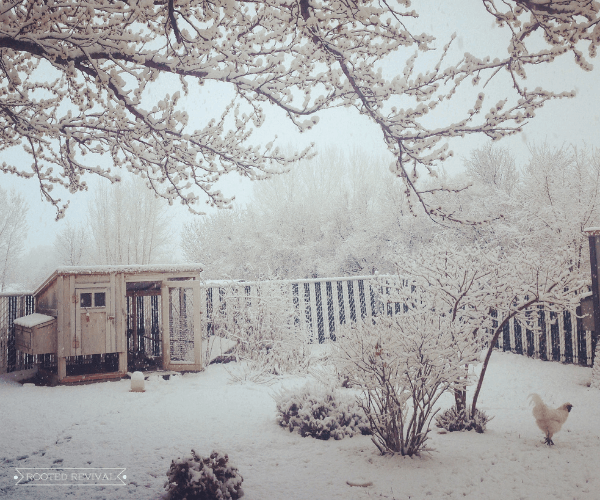
Winter Goat Care
We do a deep clean of our goat barns before winter and use the deep litter bedding method during the winter. We do not use any added heat unless if we have kids that are born during the winter, in which case we use a “warming hut”.
Our vet comes out at the end of summer to do a herd health check, fecal floats, and blood work. And, of course, fall means breeding season! We worm the goats (if needed) and trim all our goats’ hooves in the early fall. Keep a close eye on hooves during damp, mucky conditions for signs of hoof rot! Regular trims will help you monitor this. We also constantly monitor for signs of respiratory issues and pneumonia during the cold weather.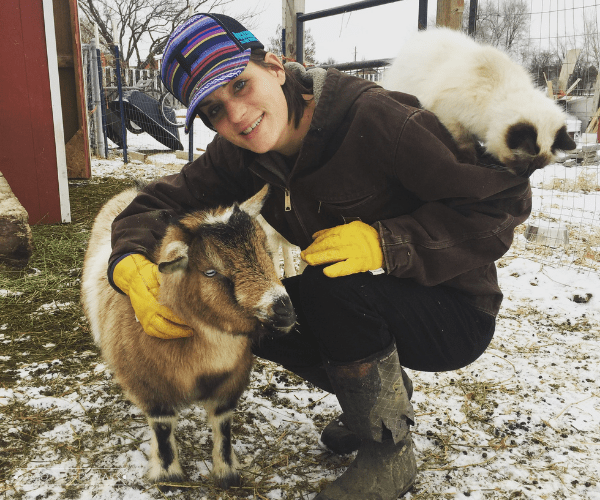
Winter Rabbit Care
We have three rabbits that live in a hutch and one that is a free range bunny. We fully insulated our hutch so it maintains heat really well. We do however use blankets to block the wire doors on the front of it during heavy wind and snow storms and during extra cold snaps.
Now, if we could just find a good system to keep their water bottles from freezing! Currently, we have two sets and we just switch them out halfway through the day or as often as needed. For our free range bunny, we make sure she always has plenty of warm bedding and places to cuddle up along with fresh food and water. 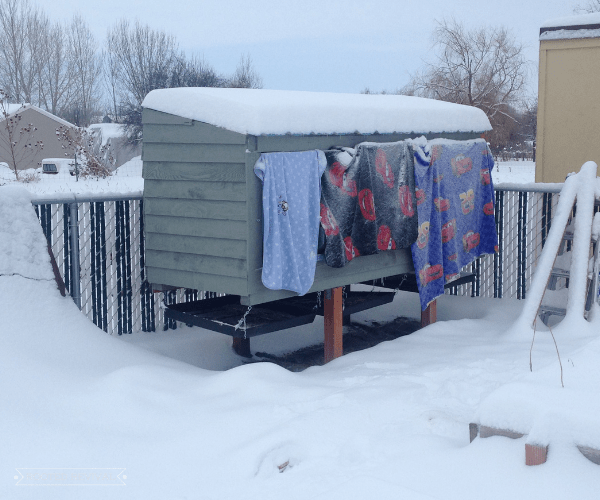
What about you? I’d love to hear about how you prepare your homestead for winter! Share with us in the comments below and be sure to grab your free copy of the Homestead Winter Prep Checklists!
If you like it, then you better put a pin on it! 
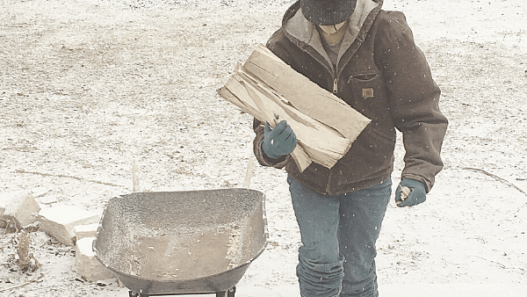
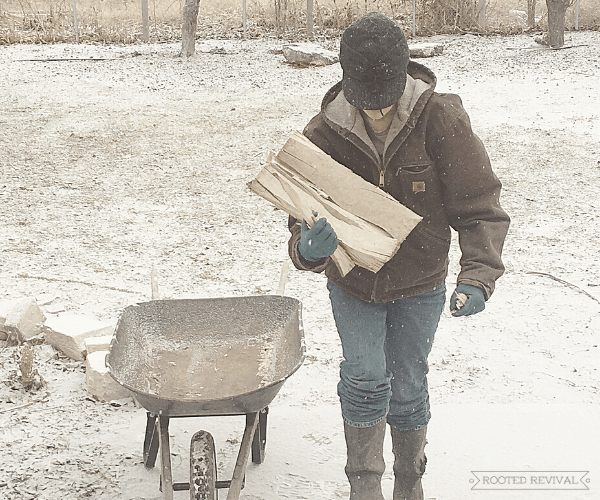
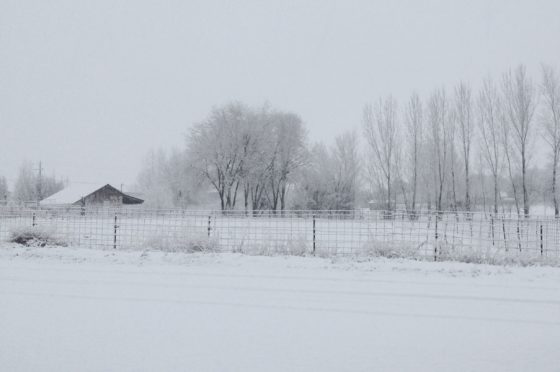
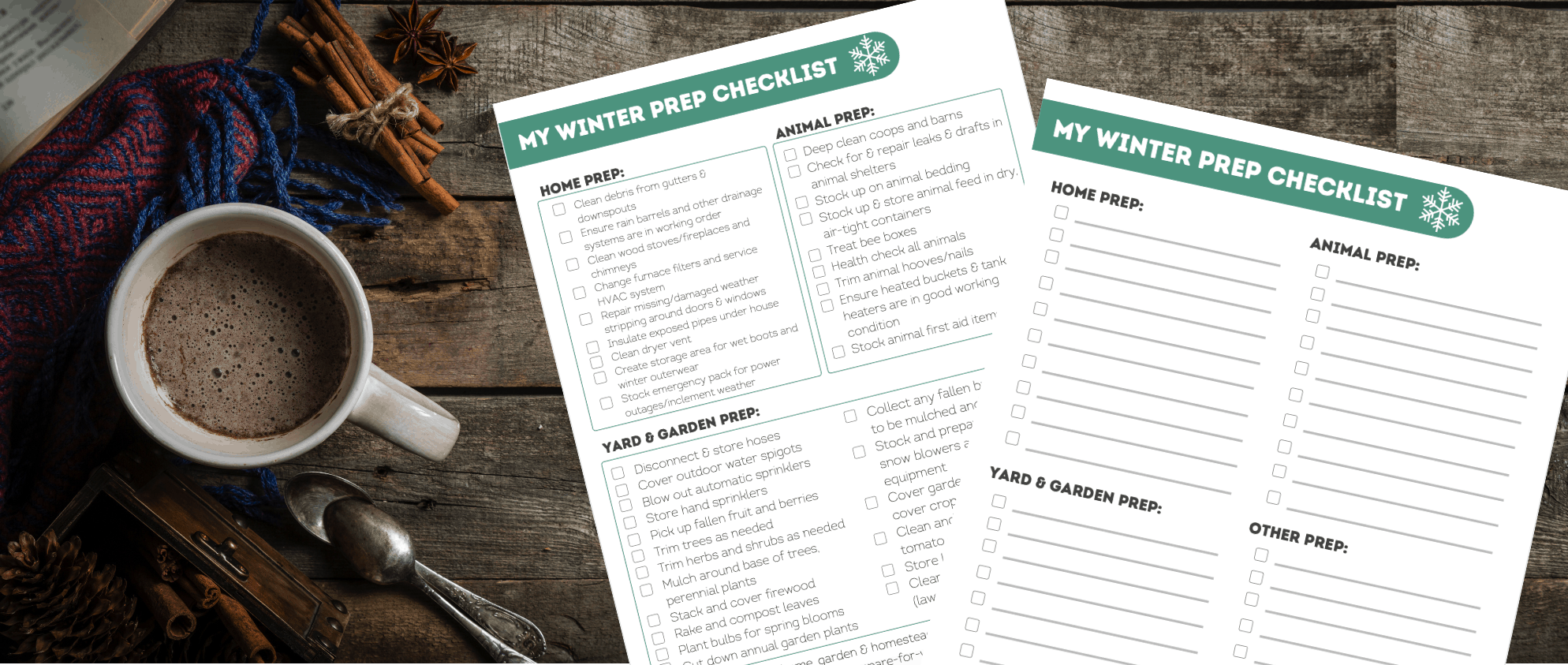
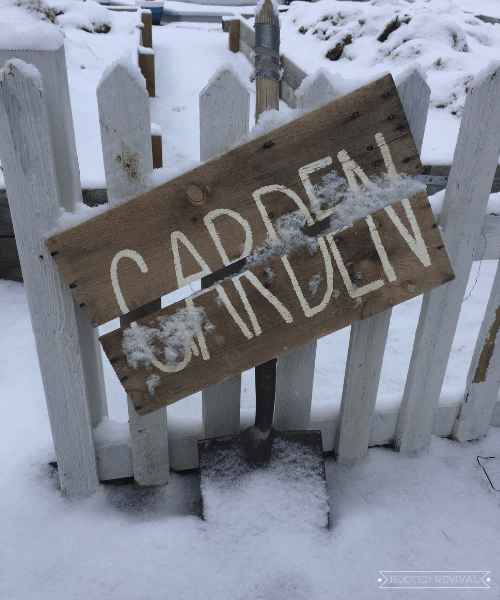
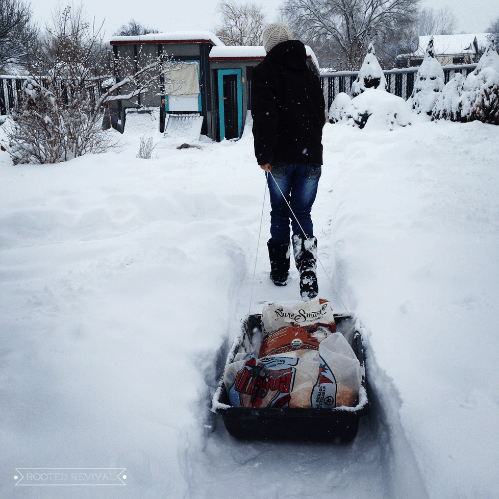



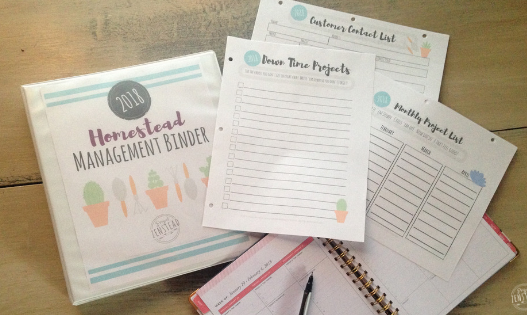
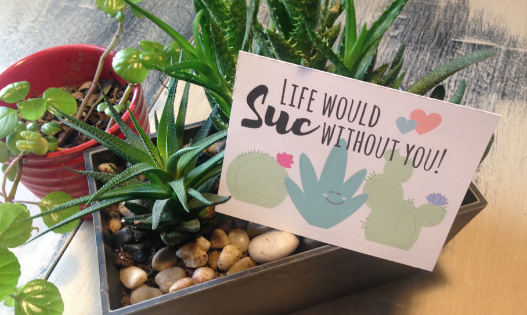
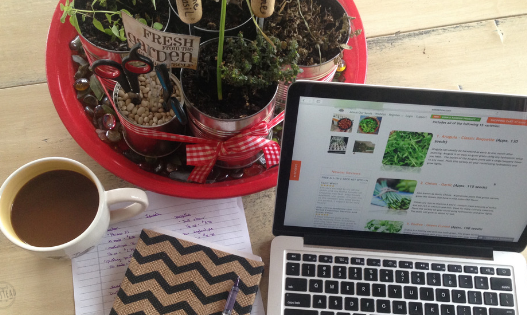
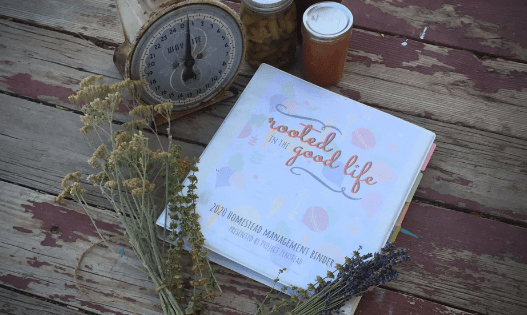
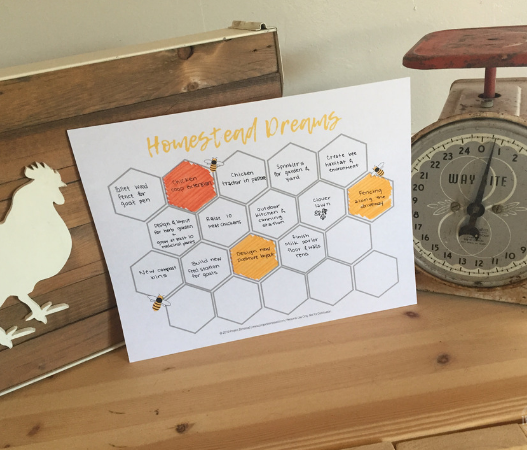
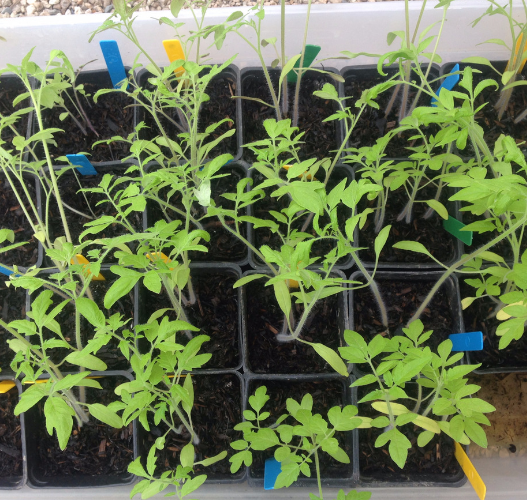

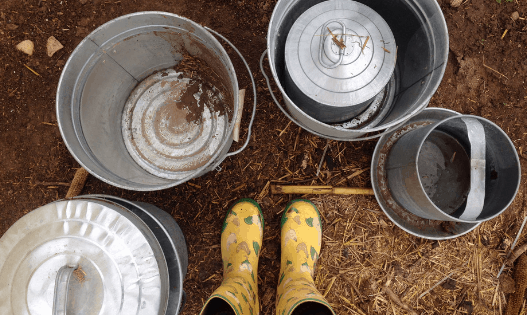
Great list
I’m glad you found it helpful! I can’t believe it’s almost time to start in on getting things ready for winter! ?
Excellent list. I always enjoy getting your e-mails…takes me back to our 30 years on a small farm. Have a safe winter.
Hi Lynn! Thank you so much for the sweet comment and for dropping by! 30 years on a small farm – that sound amazing! I can only imagine how much wisdom you collected over the years! Have a great winter season!